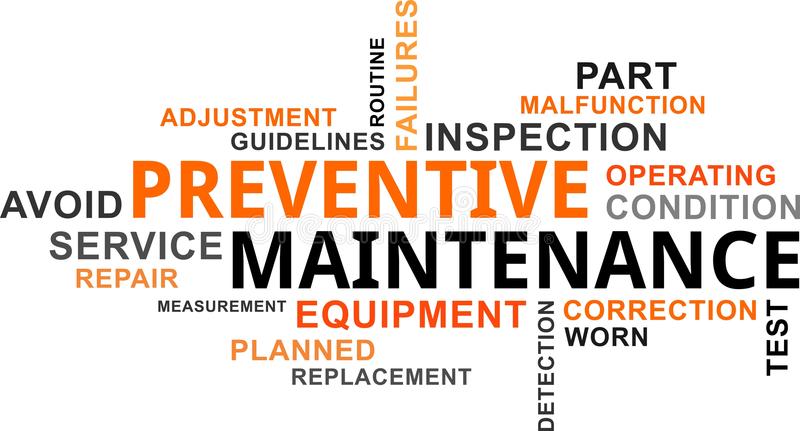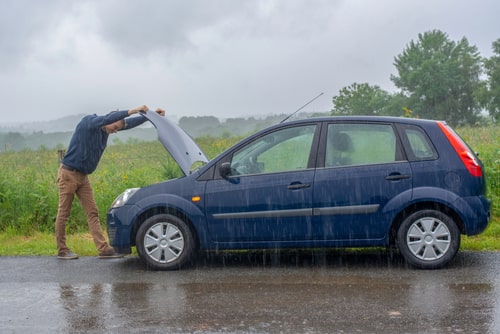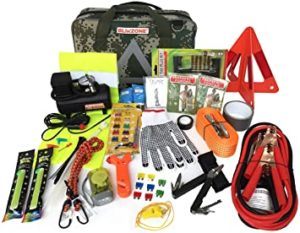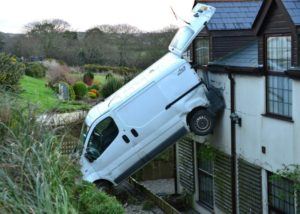Discover How To Use The Power of Authority Marketing To Make You Money While You Adventure!
No Experience, Existing Product Or Technical Skills Are Required
DO YOU BELIEVE ADVENTURES ARE WORTH CHASING?
We're an affiliate.
We hope you love the products/services we recommend on Just Van Life! So you know, there is the possibility we will collect a commission should you make a purchase via any of our links. This will in no way affect the purchase price. Thank you for your support, we really appreciate it!
Introduction
Living in a van is the ultimate means of adventure. These van life tips are essential to know before you hit the road. At some point in your van life adventure, something is going to go wrong. When it does, you’re going to need a backup plan. Breaking down in the middle of nowhere with no help for miles around can be a terrifying situation, especially at the time of year when it’s cold, and the nights are as long as they get. Mechanical breakdowns are most often the result of overlooked maintenance or something that should have been noticed before getting on the driveway.
Of all issues or challenges, there are 80 percent solutions to them. It is also applicable to this. In as much as van lifers’ vehicles will experience a breakdown at some point, there are ways to prevent these breakdowns from happening, and even when it occurs, there are possible ways it can be managed.
In other words, the general term used to refer to this management is referred to as the Vanlife Breakdown Survival Guide. Put simply; they are survival techniques a person uses to increase their chances of living and survival in any environment they find themselves in after experiencing a mechanical fault. This article is going to explicitly explain what embodies an RV breakdown, the causes, and preventive measures and how it can be well handled
Things to know about Vanlife before hitting the road
RVs are fun, no doubt, but if things go wrong, that fun can be short-lived and expensive to deal with. This might seem like the most obvious point to make, but it is, unfortunately, also the most frequently overlooked. If you have a knowledge of the essentialities of Vanlife and also take the right supplies and equipment with you, there is a good chance you can either avoid or survive a breakdown. Understand and know what benefits you have before disaster strikes. In the stress of the moment, it’s super helpful to have an awareness of what you have, so you’re not panicking trying to remember or interpret the fine print.
Also, keep your benefit booklets and information handy in case you need it on the road.

Preventive measures of an RV breakdown
Some things to know before hitting the road include purchasing a reliable vehicle. Several van lifers encounter failure while on the move as a result of the type of vehicle purchased. In other words, avoid old vintage models. That is why it is advisable to always have a detailed knowledge of whatever car you are taking out on the road. Some of the questions to consider when looking for an RV are, Will I be taking my RV off-road, how much weight will be added to your RV, What weather conditions will I be using my RV in. For example, if you are plan on using your RV in cold weather, you have to ensure that it is adequately insulated. This is because condensation can cause rot and mold, which can quickly destroy the interior of the van.
Also, ensure to take advantage of your warranty. So if there is any breakdown or whatsoever before the deadline in the warranty, you could quickly call the van dealer for a solution. And importantly, too, set out for one of the best with no issue to deal with. Despite acquiring a suitable vehicle, it is pertinent to check it out before going on any trip. Sometimes, it could just be something little that needs to be sorted out to avoid any bog, such as a bolt and nut that needs to be fixed well. Breakdowns can happen to anyone, but there are some steps you can take to minimize the risks. Be sure to properly maintain your vehicle, especially during winter cold spells. Besides, be aware of the condition of your car and pay attention to unusual noises, as well as any warning lights that may be flashing on the dashboard.
Make sure you have at least a quarter tank of gas at all times and note any changes in engine temperature or handling. If you have any doubts, contact your mechanic. Also, ensure you have the emergency kit always in the vehicle, else it will be a long day if there’s none. Other things include ensuring that there is enough battery on your phone to sustain you per adventure if you get stuck or stranded and need to call someone or the emergency line for help.
More so, emergency kits are a must to have in your car, especially in cold weather. Put together an emergency kit to keep in your vehicle at all times. It should contain a flashlight, some essential tools, a reusable water bottle that you fill before leaving, a first-aid kit, an empty fuel can, two reflective warning signs, a road atlas, and a blanket. These items will be useful if you have to wait for a towing service to arrive. In cold weather, be sure to have a winter emergency kit and never leave without some spare clothes (socks, mittens, warm sweater, tuque, and so on), especially if you’re not traveling alone. Also, pay attention to the preventive maintenance schedule.
It is always easier to try to prevent your RV from breaking down rather than to fix an RV that has already broken down. An additional reason for abiding by the preventative maintenance schedule is that no doing so may void your warranty. Some RV dealers will say that because you cause the breakdown as a result of not maintaining your RV correctly, fixing it will not fall under their warranty.

Causes of RVs breakdown
There is no particular reason as to why vehicles break down because the ideas are endless. The research conducted by Industry stats states that three out of every ten RVs will need some type of significant repair mostly in their second year, and nearly every RV will begin in their eighth year of use. There are diverse factors that cause a vehicle to break down. Engine concerns are the most common RV repair calls. Most times, it is a minor issue that often leads to major ones. An incompatible coolant, a filter that needs to be changed amongst several others are the roots of most chassis problems. Endeavor to know your vehicle and attend to its needs. Batteries need to be appropriately maintained even when it’s still new. As a van lifer, if you are parked at an RV park or storage, always make sure to charge the engine regularly.
One common reason you will find RVs on the road is due to empty gas in the vehicle. If little or no attention is paid to how much gas is in the car, then be ready for a breakdown. One thing about this is that the vehicle could stop anywhere on the road, even in the traffic leading to blockage of road or slow movement of other vehicles. And this event can be so embarrassing. It could also be as a result of tire blowouts. Tires would give out after all the wear and tear from the road, especially when not taken care of properly. So inspect your tires every time before setting out on a journey. Look out for proper tire pressure and any punctures that may be the catalyst for a blowout.
Another of the causes of an RV breakdown is exterior damage. Signage, tree branches, bridges, and any number of protruding objects can cause damage to the roof and exterior of the vehicle. Meanwhile, the best way to avoid exterior damage is to be conscious of your size and slow down when you come upon any possibly damaging obstacles. When the driver doesn’t pay attention to driving well, it could lead to an accident that can be either minor or major. If minor, the breakdown can be managed to an extent but, if not, maybe beyond repair. That is why it is keen to obey the driving rules while on the road to avoid any sort of breakdown. Well, when leaks occur, some parts of the vehicle stop functioning, appliances stop working, a breakdown occurs.
Many breakdowns can be prevented by merely checking your RV over before heading out on your trip. Five minutes spent before you drive off can not only save you from wasted time sitting on the side of the road, it can also save you from the costly expense of having to be rescued on the road. For example, you could start at the front bumper that is ensuring the tightness and condition of the belts, hoses, and engine level. Likewise that all battery connections are snug, and nothing looks burned or broken. Also, check your lights, the wheels, tires, and sides of your RV. Making sure your hitch is also secure with the brakes, both emergency and regular, also operating correctly.
Tips for handling an RV breakdown
Regardless of how much you try to prevent your vehicle from breaking down, some issues could still generate while on the road that requires you to deal with the breakdown either during the day or night. Having trouble starting your car? Your alternator gave out in the middle of a trip? Is the engine overheating? Here are the steps to effectively and, above all, safely handle a breakdown. Having to be stranded at the side of the road is unsafe for you and your belongings, not to mention potentially hazardous to your wallet.
1. Stay with your vehicle and be calm
More often than none, van lifers are usually tense and disturbed when there is a breakdown, especially while there is traffic in the middle of the road. If you are the only one on the trip, ensure that you stay with the vehicle to avoid it being towed most, especially when it’s on the wrong spot. And if possible, could decently request for a hand to push it to a safe corner where it wouldn’t disturb other moving vehicles. Staying calm will help you to think more clearly and find possible solutions and also keep you safe. This factor will enable you to communicate well with your travel partner or any service provider.

2. Safety and Signals
Even while being calm, ensure you are safe wherever you are. The breakdown might occur in a busy environment and a non-busy climate as well. Either which way, keep safety cones, flares or emergency lights with you in your RV to act as a warning signal to other drivers. If a breakdown happens while you’re driving, get your vehicle out of traffic, and make yourself visible. You can raise the hood to indicate that you need assistance. Also, make sure to use the safety vest or other safety products to increase visibility to avoid accidents on the road. Your hood’s already up, which is a good sign that you are having vehicle trouble.
Now there are a few things you can do to further increase the likelihood that, if someone passes through the area, they see you – even if they weren’t looking out for you in the first place. Turn on your hazard lights and get off at the exit if you can. If it’s dark, raining, or foggy, turn on your vehicle’s parking lights. Some emergency preparedness items that every RV must have includes warning triangles, flares, tow straps, traction mats, tire chains, etc. To avoid issues, find a safe area away from the road or behind a roadside barrier. Besides, if it’s safer to remain in the vehicle, ensure all occupants sit in seats as far from traffic as they can and fasten their seatbelt. And if you feel it’s also safe for you and your passengers outside of the vehicle, ensure you do that.
Sometimes, you might begin to feel insecure or threatened; all you need to do is dial the emergency line. If there’s a danger of other vehicles colliding with yours, leave your car and find a safer place; always exit from the passenger side. Otherwise, it’s best to stay in your vehicle with your seat belt fastened and wait for help to arrive, especially if you’re stuck on a bustling road. If you’re traveling with children, lock the doors to prevent them from leaving the car and make sure they stay warm using the blanket from your emergency kit, if necessary. Stay calm and speak softly to reassure them.

3. Use of some essential items on board
Don’t forget that repairs and breakdowns are all part of the journey. Embracing such a concept in advance will help keep you in the right frame of mind. Sure, it might be inconvenient; however, it will come and go. Depending on the extent of damage experienced, it is possible the RV doesn’t get repaired that day until the second day. So, you need to come on the trip little money that can sustain you even if it means having to stay in a hotel overnight. And you could as well be lucky if a family offers you help to sleep overnight.
Every RV owner knows the importance of having survival essentials like extra batteries, non-perishable food, and an emergency water supply on board, including other pertinent items. Likewise, how it’s also essential to be prepared for all the roadside survival mishaps that could happen while traveling. Some emergency kits that need to be on board in case of any breakdown includes a fire extinguisher, jump starter, tool kit, jumper cable, tire plug kit, tire ramo or jack, portable air compressor, survival pocket guide, compass, survival whistle, and several others.
These items are essential because even if you can’t make use of these items, there’s a 50% assurance you’ll find someone who has an idea. Moreover, there’s a survival pocket guide. For example, if you often go hiking, or even if you find yourself in a bug-out situation, then it pays to brush up on necessary outdoor survival skills. This pocket guide is small enough to toss in your hiking pack and covers foundational knowledge, such as how to start a fire, finding water, and how to deal with hypothermia.

4. Adequate information on the location
In a breakdown situation, the information you provide will make it easier for the patroller to debug and bring the appropriate equipment. Note the reference points (streets, intersections), as well as an on-ramp and exit numbers if you’re on the highway. This information alone would be beneficial if you have to call an emergency road service. You’ll need to provide the dispatcher with the following details; your name, the model of your vehicle, the nature and location of the breakdown, your license plate number, and a phone number where you can be reached easily. Also, find out when the tow truck will arrive. The assistance service should be able to provide you with an estimated time of arrival based on the weather conditions and the breakdown location. When the tow truck arrives, make sure it’s actually from the assistance service you called.
Don’t forget to keep in mind that navigation systems can malfunction and don’t always work optimally in remote areas. And if unsure, you could stop anyone from asking for more information about the vicinity. This is not a time to get shy and naïve, just be smart about it. Know your route, though it might seem obvious, thoroughly knowing your way and the terrain you’re heading into is critical. Standard GPS devices and smartphone map apps offer little help when traveling in rural areas. Be sure to have a redundant map setup. That means bringing a purpose-built GPS device like Garmin’s new overlander and packing a topographical map as well. Electronics can fail; paper doesn’t.

5. Find Help from Anywhere
Signaling for help should be done in several ways to maximize your benefits. First, you should always be in the highest and most visible position. This would be the highest ground you can locate near you. Signaling can also be done by using sunlight against a reflective material and pointing that in the direction of a search party or vehicle as well as lighting a very smokey fire to gain the attention of search parties or people nearby. If things do go sideways, attempting a call for help is your priority. Prepare for the worst-case scenario by assuming your cell phone isn’t an option. While your first call will most likely be to Roadside Assistance but don’t rely entirely on them to get you out of trouble. Besides, it is very likely you won’t have a phone to get through even to your mechanic, and that is if there is one nearby or you’ll forget your phone at home. If you’re taking a leisurely off-road drive, the first scenario is the most likely.
Don’t count on your cell phone to be your only lifeline. Always have a backup communication plan. Park your vehicle as far to the left-hand side of the road as possible. As a professional driver, you could be familiar with a few things and then decide to sort yourself out without inquiring for help from anybody. Because sometimes, the solutions you can come up on your own are better than those offered by the service providers. Can also try to think of other solutions on your own or call a mechanically inclined friend, your RV manufacturer, or anyone else who may be of assistance.
Now that we live in an advanced digital age, you can just go on the internet to search for a mechanic at the nearest workshop. And if you, by chance, get help from the Roadside Assistance, do not approach the vehicle when it arrives, stay in your car or in the safe area you have moved to, and wait for the service officer to approach you. Besides, when signing up for such an emergency plan, make sure the company offers nationwide protection and has access to the kinds of heavy-duty tow trucks that can bail out the type of motorhome or trailer you own. Importantly, even after waiting for a long time with no help, never get in a stranger’s vehicle. More easily remedied problems such as being out of gas or a dead battery, can be usually handled by the local service station.
Conclusion
It is no doubt that this article has, in one way, gave a nice idea or knowledge of what to do before and after experiencing an RV breakdown while enjoying the trip. To avoid disrupting the journey or trip, endeavor to follow what has been stated above. With this survival guide, you are sure to have a fantastic live and won’t have to worry too much about failures on the road!
JUSTVANLIFE
Discover How To Use The Power of Authority Marketing To Make You Money While You Adventure!
No Experience, Existing Product Or Technical Skills Are Required
DO YOU BELIEVE ADVENTURES ARE WORTH CHASING?
